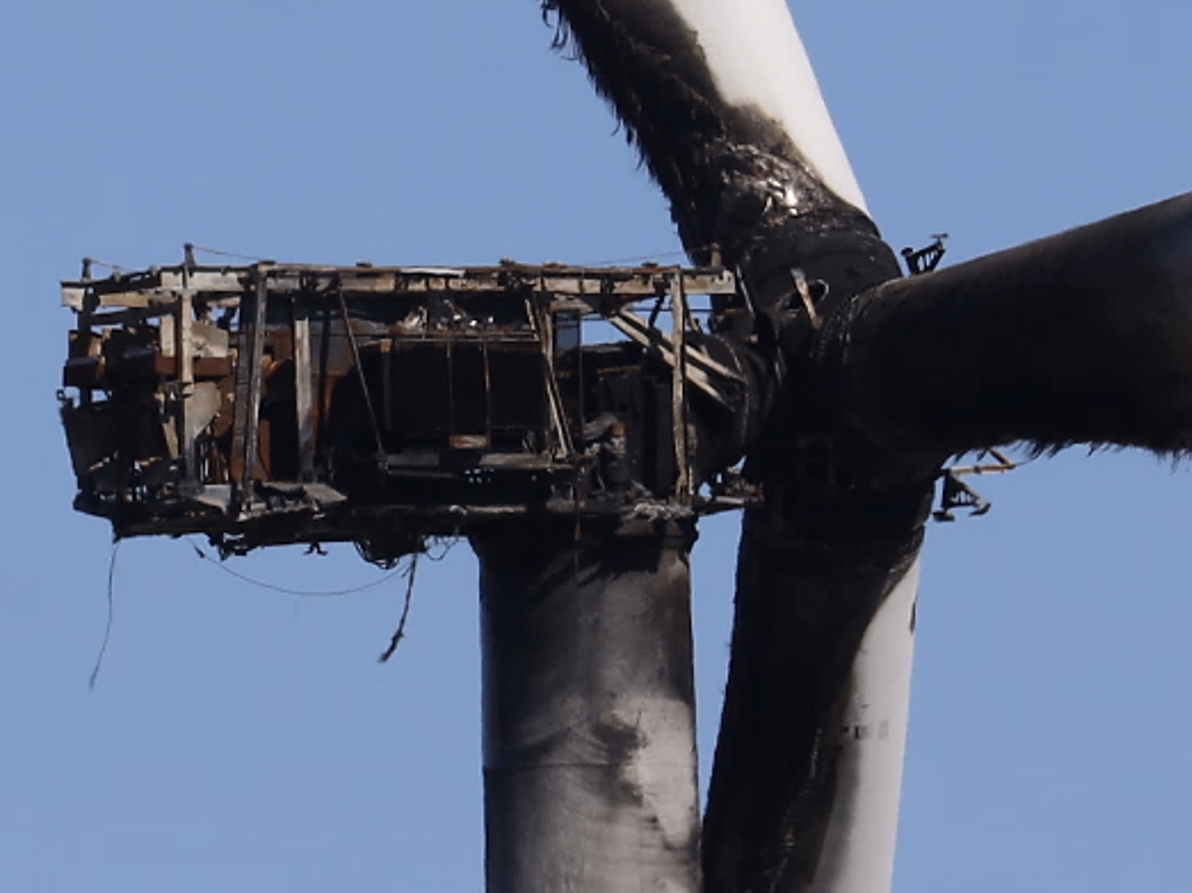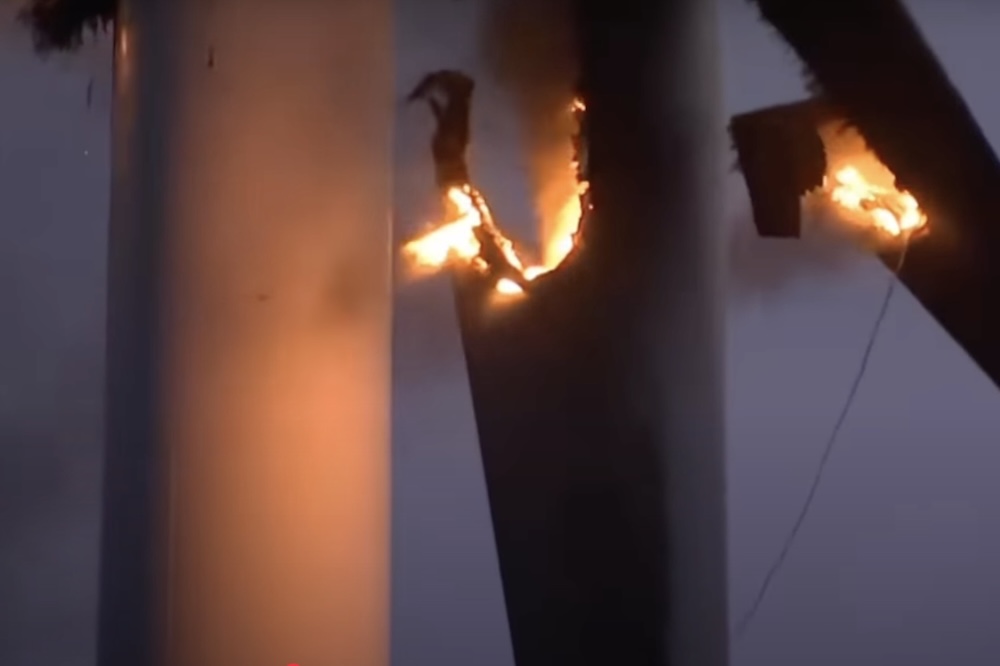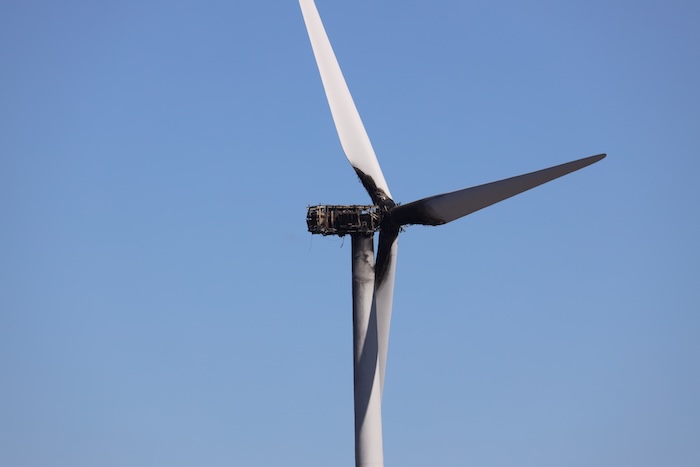Managing Wind’s Fire Risk
Clean energy is a key component in the fight against climate change. As the world embraces energy from renewable sources, what is also coming to light is that many components of clean-energy systems present a fire risk.
While lithium-ion incidents often dominate the headlines, fires involving wind turbines are becoming increasingly common. Due to significant underreporting, exact figures are difficult to verify; however, a study referenced in IEEE Spectrum estimates that roughly 1 in 2,000 turbines experience a fire each year. Notably, in about 90 percent of these incidents, the fire results in substantial downtime or a total loss of the turbine.
 Risk
Risk
The most typical fire in a wind turbine occurs in the nacelle at the top of the tower. Fires can occur in the nacelle due to:
- Electrical failures in transformers, generators, or power converters
- Overheated bearings or gearbox failures
- Lightning strikes
- Hydraulic system failures
- Human error or lack of maintenance
When a fire starts in the nacelle, there are plenty of fuels that can burn, e.g.:
- Flammable hydraulic fluids
- Flammable lubricants
- Plastic or Flammable insulation
- Nacelle housing (which is often made from fiberglass)
- Electrical components and wiring
When a fire ignites in a nacelle, absent an effective fire suppression system, the high-wind environment rapidly feeds and spreads flames once the nacelle is breached. This causes flaming debris to fall and ignite vegetation below. Firefighting from the ground is nearly impossible and inevitably leads to a total loss of the wind turbine.
Solution
The ideal solution for wind turbine fire protection involves a three-pronged approach:
- Prevention
The best fire protection method for wind turbines — or anything, for that matter — is to prevent fires from occurring in the first place. This is best accomplished by using ruggedly built sensors in the nacelle to monitor for conditions which have the potential to cause a failure and fire.
Reporting in real-time, these sensors remotely inform operators of developing hazardous conditions; this allows them to take positive actions to shut down the wind turbine, perform emergency maintenance, or other steps which can prevent a fire from occurring.
The nacelle can be equipped with sensors that monitor:
- Interior temperature
- Ambient humidity
- Particulates in the air
- Heat conditions of specific equipment using IR thermography
- Detection
If conditions in the nacelle deteriorate further, detection sensors will immediately alert operators. These sensors include:
- Volatile organic compounds and/or hydrogen (VOC/H2) sensors to detect early signs of combustion
- IR thermography
- Smoke
- Temperature
Once alerted, operators can take more urgent remote countermeasures such as:
- Triggering of alarms
- Shutdown
- Isolation from the grid
- Activation of cooling and/or ventilation systems
- Isolation of hydraulic systems
- Activation of fire suppression systems

Suppression
If fire ensues before countermeasures can be taken, the last line of defense is a fire suppression system in the nacelle. The challenges with providing fire suppression in nacelles include their often-remote location, high elevation, and lack of available space. Additionally, the fire suppression agent must be safe to use around electrical equipment and not require significant maintenance or complicated testing; these factors eliminate many of the legacy fire protection systems.
One agent tailormade for nacelle fire suppression is condensed aerosols. Condensed aerosols are typically a potassium-based agent that gets aerosolized and dispersed throughout the nacelle. The agent interferes with the chemical chain reaction of the fire, causing rapid flame collapse and extinguishment. Furthermore, the agent remains suspended for several minutes providing reflash protection. Quickly knocking down the fire and keeping it suppressed is critically important if workers are present when a fire breaks out.
Condensed aerosol is discharged from compact, sturdy generators which are built for harsh environments and take up very little space. With no piping, they can easily be retrofitted into existing wind turbine installations. Once installed, they are virtually maintenance-free, require no testing, and some brands have a 15-year service life.
Condensed aerosol units can be activated by connection to the fire detections sensors, remotely activated from the operations control room, manually activated, or set to discharge when the environment around it reaches a preset temperature.
Further, condensed aerosols have zero ozone-depletion potential, zero global-warming potential, and zero atmospheric life, posing no threat to people or the environment. This is important because many other fire suppression agents are facing regulatory action due to their health and environmental hazards.

Conclusion
Wind turbines represent multi-million-dollar investments that also produce substantial revenue. In the event of a fire, however, a total loss is practically guaranteed. Therefore, providing effective fire protection certainly makes sound financial sense. The ideal approach provides operators with sensor technology which can both prevent a fire and provide early detection in the event a fire begins or is about to begin. The final element is an effective fire suppression system. Using such a comprehensive system truly can make nacelle fires a thing of the past.
Jim Dickinson is a global business leader at Fireaway Inc., makers of Stat-X, with extensive experience across the fire protection, chemical, and oil and gas industries. Fireaway provides fire suppression solutions ideal for use in the nacelle, control cabinets, and down tower enclosures along with a hand-deployed Stat-X First Responder device designed to support suppression and emergency egress for turbine technicians. UltraSense sensors are designed to identify early warning signs of fire risk such as thermal anomalies, VOCs, and hydrogen off-gassing, enabling preventative action in high-risk renewable energy applications like wind turbines.
Stat-X | www.statx.com
Author: Jim Dickinson
Volume: 2025 July/August










